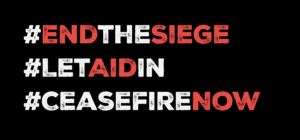
Feeling threatened by the expansionism of their powerful neighbor – which is using antipersonnel mines on a large scale in its war against Ukraine – Poland, Finland, Lithuania, Latvia, and Estonia have announced their disastrous plan to turn their back on the Ottawa Treaty. Their withdrawal would be a repudiation of the promise made to their victims, and an admission of weakness. As warfare surges in an increasingly lawless world, it will also be a death sentence for many civilians.
I share with others the immense privilege of having been one of many participants in the Ottawa Process. This led, in 1997, to a treaty for a complete ban on anti-personnel landmines. Of all the humanitarian initiatives I have been part of, this collective endeavor is the one that offers me the greatest sense of accomplishment. In just five years of intense negotiations, the Treaty succeeded in banning these weapons from the arsenals of 165 countries, initiated ambitious mine action programmes, and dramatically enhanced support for the hundreds of thousands of survivors.
The End of a Solemn Commitment and a Tepid Response
Alas, although the 27 EU member states, along with the United Kingdom, are still formally parties to the Ottawa Treaty today, the conflict in Ukraine may signal the obsolescence of one of the most promising commitments ever made to civilian populations affected by war, and its aftermath, around the world. Recently, Ukraine—also a signatory to the Treaty—accepted large transfers of anti-personnel landmines offered by the United States. And now the unthinkable is happening. Feeling threatened by their powerful neighbor’s expansionism, Poland, Finland, Lithuania, Latvia, and Estonia have announced their disastrous plan to turn their backs on the Ottawa Treaty.
These announcements have not sparked loud protests—neither within other EU countries with the exception of Ireland, nor from some of the other original 165 Treaty signatories—as though these withdrawals are understandable and, therefore, acceptable and ultimately of little consequence. However, this unexpected devaluation of a solemn collective commitment may trigger a spiral of further withdrawals. At the very least, it will dramatically weaken the resolve of Treaty parties to uphold their obligations.
A Moment of Truth and Political Courage
Humanity’s propensity for self-destruction is as old as the history of warfare, mitigated only by attempts to regulate armed hostilities to protect non-combatants. What was once called the “landmine epidemic”—which peaked in the 1980s and 1990s with nearly 30,000 new victims each year—was one of its most insidious and barbaric manifestations, but also one of the most ignored or neglected. Cheap to produce or acquire, anti-personnel mines were stockpiled by the tens of millions in military depots, traded along the lines of alliances, and were accessible even to the most poorly funded non-state armed groups.
The global scale of this uncontrolled threat—which had, over time, caused the slaughter or mutilation of hundreds of thousands of civilians, destroyed livelihoods, and hindered peacekeeping operations—prompted the mobilization of civil society groups. At the urging of the International Campaign to Ban Landmines (ICBL), formed in 1992 by six NGOs*, Canada’s historic initiative was one of the few good news stories on disarmament from the end of the last century.
Supported by a handful of visionary states freed from Cold War alignment, this unlikely alliance between states and NGOs—nicknamed “new diplomacy”—was forged through a shared determination to stop the massacres caused by a weapon that continued to kill or maim mostly farmers, villagers, and children decades after hostilities had ceased.
A Rare Occurrence: a Respected Treaty and an Effective Protection of Civilians
With enthusiastic popular backing and support from prominent moral authorities, the Ottawa Treaty—now signed by 165 states—established the illegal status of anti-personnel mines. Exacting in its commitments and enforcement measures, and held under the close scrutiny of the Landmine Monitor which ICBL publishes annually, this ban on AP mines has been broadly respected by Treaty parties. Even non-signatory states halted their transfers of a weapon rejected by the international community.
Rightly praised for its comprehensiveness, the Ottawa Treaty has become a benchmark for progress in upholding civilians’ right to protection, both during conflicts and in the uncertainties surrounding fragile returns to peace. Nearly 30 years after its adoption, the results speak for themselves: despite the dramatic resurgence of armed conflict—mostly involving non-signatory states or non-states armed groups (NSAG)—respect for this new norm has spared the lives of at least 20,000 potential new victims every year.
The “Cowards’ War”: an Excruciating Reality
In its anti-mine campaigning, Handicap International was inspired by the report by Human Rights Watch and Physicians for Human Rights, Landmines in Cambodia: the Cowards’ War, published in September 1991 while the Paris Peace Agreement was paving the way for the return of refugees and the closure of border camps in Thailand. Widely distributed to policymakers and the media, this report exposed the unrestricted use of anti-personnel mines in Cambodia, and the unacceptable threat they posed to civilians including the hundreds of thousands of returning refugees after 13 years of exile.
Until then largely overlooked, landmine accidents in Cambodia and in many other countries had been brushed off by military officials as mere « collateral damage » by a weapon presented, nevertheless, as «deemed effective and necessary»—and therefore «legitimate if used responsibly».
Behind these seemingly virtuous statements lay a far more horrifying reality, one that ordinary citizens could scarcely imagine. Typically hidden underground or in the vegetation, randomly dispersed near roads or water sources, the first feature of this weapon is its most appalling: it is the victims themselves who trigger—by a single misstep or by their mere presence—the explosion that will kill them in atrocious suffering, or mutilate and plunge them into lifelong physical, psychological, economic, and social damnation, a fate which is tragically common in impoverished rural areas.
No soldier is present to distinguish between civilians and combatants, nor to show restraint before triggering the devastation that will ruin a man, a woman, or a child’s life. No recourse exists for the survivors and their families, condemned to misery while haunted by the guilt of having walked into the path of these “eternal sentinels” they knew were buried in their land.
Originally designed to protect anti-tank minefields—too vulnerable to manual clearance by armed opponents—anti-personnel mines became a global scourge. They were used with no safeguards in many conflicts, particularly in Cambodia, Afghanistan, Angola, Mozambique, and more recently in the wars in Iraq and the former Yugoslavia. Their widespread dissemination turned them into weapons of terror, deliberately used to make entire rural areas uninhabitable, with absolute disregard for the right of villagers to use their land safely.
Betrayal and Slippery Slope
Withdrawing from the Ottawa Treaty would be a blatant breach of faith by signatory states, with immense symbolic and practical repercussions. Beyond the insult to the other Treaty parties, this decision would be endured—by the more than 600,000 survivors of these weapons worldwide and the families of those who did not survive—as a betrayal and an open wound, since it was explicitly in their name that states pledged to eliminate anti-personnel mines from their arsenals.
Any unraveling of the Ottawa Treaty would be catastrophic. Mines still contaminate the land to varying degrees in about 58 countries; a resurgence of production and use would halt the tremendous progress made through nearly 30 years of sustained efforts to free people from the danger posed by landmines, under the coordination of the United Nations Mine Action Service (UNMAS).
Unjustified Falsehood and Admission of Weakness
From a military perspective, the decision by Poland, Finland, Estonia, Latvia, and Lithuania to withdraw from the Treaty does not withstand scrutiny. While the growing and legitimate anxiety of their populations can be understood, political leaders are deceiving them when they claim this weapon provides real protection.
They know full well that any alleged security benefit would be illusory in the face of a determined invasion. Furthermore, during negotiations leading to the Treaty, military experts and historians of conflict made it abundantly clear that landmines had never changed the course of a war, much less secured victory. Conversely, they agreed that the toll on civilians—both during and after conflict—was vastly disproportionate to any uncertain or limited military benefit.
Ignoring this reality or pretending otherwise today is either a panic-induced delusion or a deceptive tactic designed to put on a show of resolve to falsely reassure the public. Either way, for its intended recipient, this withdrawal would be an admission of weakness, made worse by its utter lack of credibility.
Bringing Chaos to Interoperability
As many military experts have pointed out, AP mines have often inflicted as many casualties among the troops deploying them as among the enemy. In the event of a conflict that would involve an exclusively European defense force, the withdrawal of Poland and the Baltic States would inevitably lead to serious interoperability issues. Troops from countries that have banned these weapons would be forced to operate alongside others who had reintroduced them. Having to protect themselves from the mines of their own allies would create an environment of mistrust and potential chaos.
Disarmament Treaties Are Not Discretionary
The true test of a disarmament treaty comes when peace is under threat—when the values uniting a people and binding their leaders to their allies are not forsaken in the name of border defense. Signing a disarmament treaty cannot be a discretionary commitment—something states can abandon at the sound of marching boots and rising tensions at their borders.
The people of Poland, Finland, and the Baltic States have long memories and are indeed at the front lines of their powerful neighbor’s real or perceived imperial ambitions. Withdrawing from the Ottawa Treaty will not change this fact. Instead, it would send a message to their European allies that they do not believe in the deterrent power of the European defense in construction.
Rather than going it alone by stepping out of a shared EU-wide ban on AP mines, they would do better to honor it unconditionally and strengthen a genuine alliance to obtain the security guarantees they seek. Paradoxically, leaving the Ottawa Treaty would only deepen their vulnerability.
The Ottawa Treaty’s Strength Lies in Its Integrity
Given the brutality of warfare in Ukraine and its blatant disregard of civilians, the right to self-defense by all possible means is gaining traction in public opinion, and the temptation is strong to consider the return of the use of anti-personnel mines as a marginal or secondary issue. Yet withdrawing from the Ottawa Treaty would mean abandoning the values that led to its signing and accepting the inhumanity inherent in the use of this weapon.
Let us remember that the total wars that devastated Europe and beyond showed how the normalization of horror feeds itself on the seeds of such betrayals.
Speaking Out Before the Irreversible
Everything must be done to prevent a resurgence of the use of this indiscriminate weapon. Its tragic impact on civilian populations—widely known and well-documented—demands a rapid and decisive new mobilization to preserve a Treaty which is a flagship of international humanitarian law for the protection of civilians during and after warfare.
Political leaders in other State Parties—starting with all EU members—must heed the voice of civil society, which urges them to appeal to Poland, Finland, Lithuania, Latvia, and Estonia not to renege on their commitments. Diplomatic efforts by other EU member states, coordinated with those of the UK—committing to unconditional solidarity in the face of aggression—can convince them that honoring their promise and responsibility is in their own best interests.
NGOs behind this historical breakthrough must rise together against its weakening. The Nobel Peace Prize we proudly share obliges us to stand up for the Ottawa Treaty. I invite everyone, including concerned civil society actors and others, to sign the attached appeal launched by Handicap International and supported by many individuals who have played a crucial role in the process of banning anti-personnel mines.
*Founding NGOs of the International Campaign to Ban Landmines (ICBL) in November 1992: Handicap International, Human Rights Watch Arms Project, Mines Advisory Group, Medico International, Physicians for Human Rights, and Vietnam Veterans of America Foundation.
About the Author: Jean-Baptiste Richardier is the President of Humanitarian Alternatives. He is a co-founder of Handicap International and United Against Inhumanity (UAI).
The opinions expressed in this blog are those of the author and do not necessarily represent the views of United Against Inhumanity (UAI).











